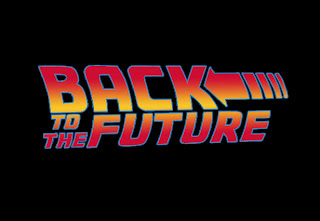By Linda Check and Meagan Freeman
In the first video we watched, Back to the Future, we met Mr. Brian Crosby. Brian Crosby is a 4th-6th grade teacher at Agnes Risley Elementary School in Nevada. The video begins when Crosby tells the audience that 90% of his students are second language learners in poverty level homes. He also explained how less than half the class knew what city, country, and state they lived in. This shows how little his students are exposed to, both in school and in life itself. Crosby opens up a whole new world to his class, though. Oh, he makes sure to cover the state standards, but he takes it a step further by not only teaching the material, but also letting his students teach, invent, and witness the class material.
Crosby’s class has a one-on-one laptop/student ratio, which the students use to make individual blogs, Skype with students all over the world, and conduct additional research of the topics gone over in class. All of us wish to have an opportunity like this in our future classroom. These students, who live in poverty, are able to teach lessons to kids in New Zealand, because their teacher encourages and gives them the opportunity to do so. This video showed us that you cannot judge a student’s ability to learn by where they come from. We all agree that Brian Crosby is an excellent educator and his classroom has no limits! We learned how to become more efficient teachers, thanks to this video!
Blended Learning Cycle
By Linda Check and Meagan Freeman
In the second video,Blended Learning Cycle, Paul Andersen explains blended learning. He tells us that blended learning is taking compelling parts of online, classroom, and mobile learning and blending them all together in the classroom. This comes together with the learning cycle, which has “five E’s”. They include starting with an Engaging question, then students are able to Explore, then the teacher Explains the phenomenon, the class Expands upon the question, and last the class Evaluates what happened. The learning cycle helps present material and ensure it is learned. Putting those two together creates the Blended Learning Cycle. Paul gave us an acronym to remember this, “quivers”. His blended learning cycle contains six parts.
1. Question- Something to really get the students attention.
2. Investigation/Inquiry- experiment and use inquiry learning.
3. Video- use learning through video instead of just classroom lecture.
4. Elaboration- give your students reasoning/diagrams.
5. Review- meet students individually and check their understanding.
6. Summary Quiz- students will take a quiz on the lesson.
After the students have a few “quivers” learning cycles, the students will have a unit test to show what they know. Paul explains this as a type of mastery learning.
We both agree that blended learning should be used in the classroom. Blended learning helps students become more engaged and retain the material easier than other types of lessons. Paul did a great job of explaining blended learning piece by piece. We agree that starting lessons with an engaging question not only draws students in, but helps get them thinking. Letting students explore is important. It gives them freedom and a chance to learn by his or herself. The acronym Paul uses is a creative way to remember the six parts to his blended learning cycle, which we agree is a great cycle. We love the idea of the individual reviews. It is crucial for each student to comprehend the lesson for it to be successful. This video was very informative!


Interesting. Good job.
ReplyDelete